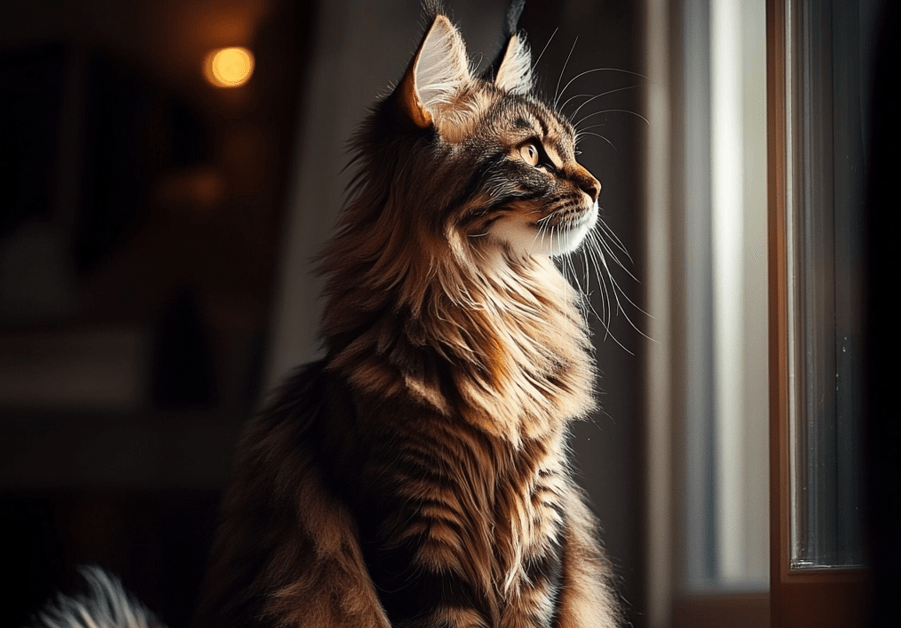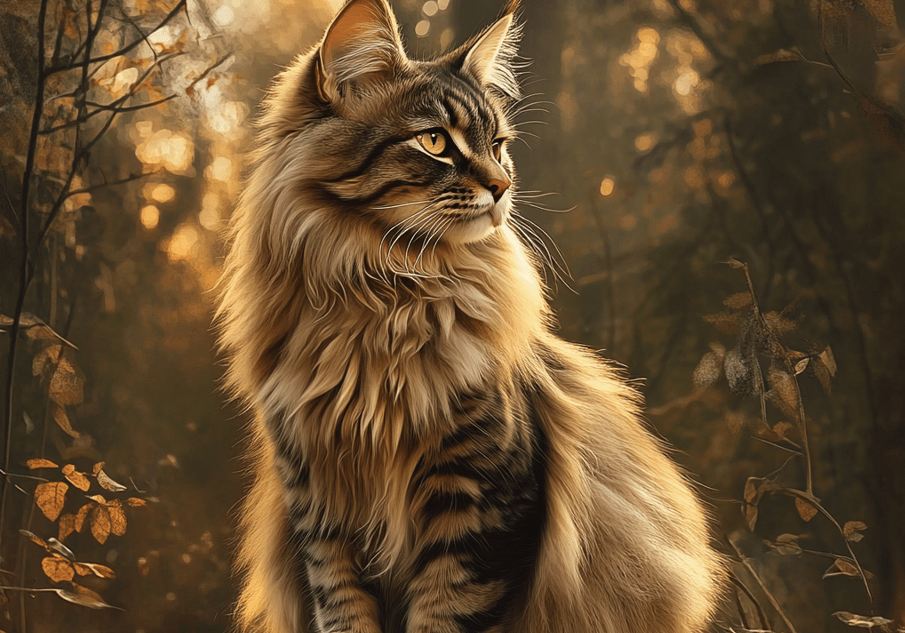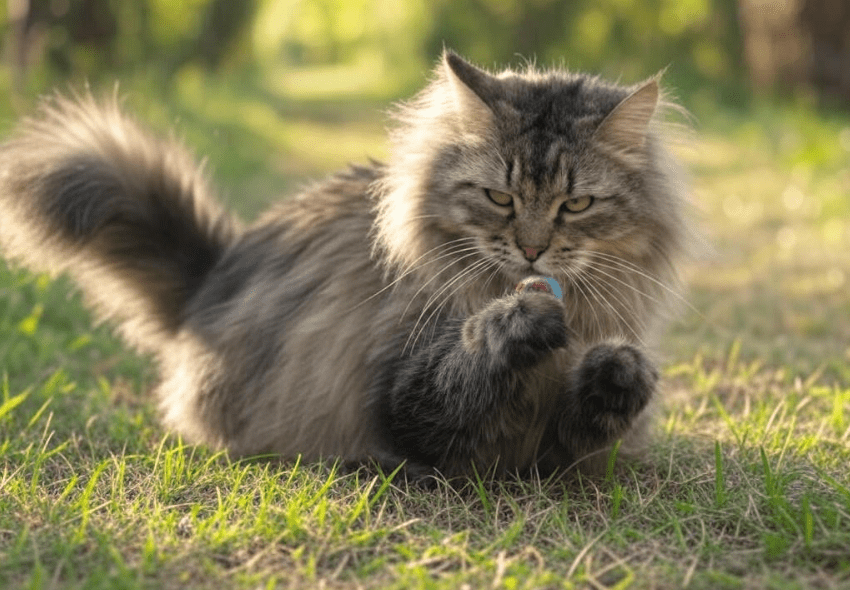
Introducing a Maine Coon to a new cat or dog can be an exciting yet delicate process. Known for their large size, gentle temperament, and sociable nature, Maine Coons often adapt well to new companions, but a thoughtful approach is essential to ensure a harmonious relationship. This comprehensive guide provides step-by-step instructions, expert tips, and practical strategies to successfully introduce a Maine Coon to a new cat or dog, fostering a peaceful multi-pet household. Whether you’re welcoming a kitten, adult cat, puppy, or dog, this article is your ultimate resource for a smooth transition.
Why Introducing a Maine Coon to a New Pet Requires Care
Maine Coons are often described as “gentle giants” with dog-like personalities, making them generally friendly and adaptable. However, their size, territorial instincts, and unique behaviors mean introductions must be handled with care. A poorly managed introduction can lead to stress, aggression, or long-term conflicts. Key factors to consider include:
Territorial Nature: Maine Coons may feel protective of their space, especially if they’ve been the only pet.
Size Difference: Their large size can intimidate smaller cats or dogs, while boisterous dogs may overwhelm a Maine Coon.
Personality Variations: Each Maine Coon has a unique temperament, ranging from outgoing to reserved, affecting how they respond to new animals.
Prey Drive: Some Maine Coons or dogs may exhibit a strong prey drive, complicating introductions.
By understanding these dynamics, you can tailor the introduction process to suit your Maine Coon and the new pet.
Preparing to Introduce a Maine Coon to a New Cat or Dog
Preparation is the foundation of a successful introduction. Before bringing the new cat or dog home, take these steps to set the stage for a positive experience.
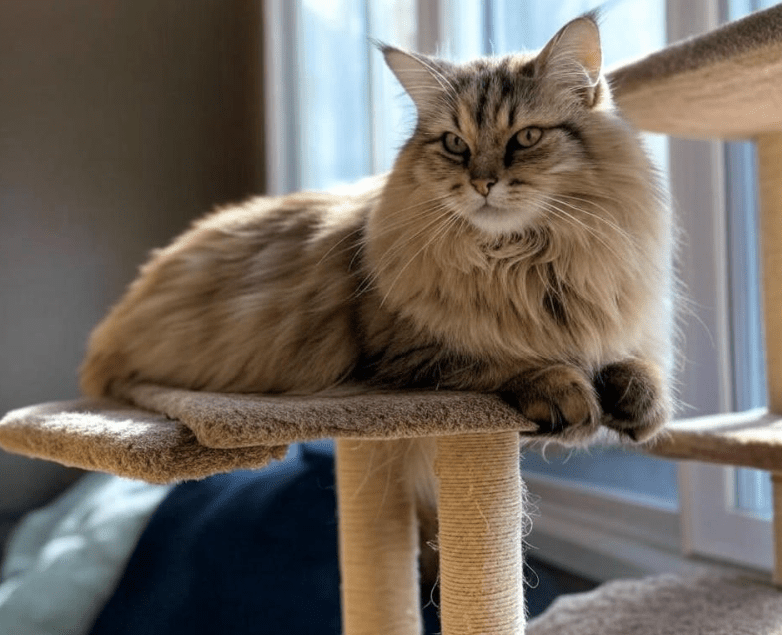
1. Assess Your Maine Coon’s Personality
Evaluate your Maine Coon’s behavior and temperament:
1.Are they confident, shy, or territorial?
2.Have they lived with other pets before?
3.Do they show aggression or fear in new situations?
A sociable Maine Coon may adapt quickly, while a reserved one may need more time.
2. Choose the Right Companion
Select a new pet whose personality complements your Maine Coon:
1.For a calm Maine Coon, a laid-back cat or dog is ideal.
2.For an energetic Maine Coon, a playful but not overly dominant companion works well.
3.Consider age and size: A puppy or kitten may be less intimidating than an adult animal.
3. Prepare Your Home
Create a pet-friendly environment to reduce stress:
Safe Spaces: Set up separate areas for each pet with beds, litter boxes (for cats), food, and water.
Neutral Territory: Designate a neutral space for initial meetings, free from strong territorial associations.
Scent Exchange Supplies: Gather blankets or toys to swap scents between pets before meeting.
4. Health and Vaccinations
Ensure both animals are healthy and up-to-date on vaccinations:
1.Schedule veterinary checkups to rule out illnesses that could cause stress or aggression.
2.Confirm flea, tick, and parasite treatments are current.
3.For cats, test for feline leukemia (FeLV) and feline immunodeficiency virus (FIV).
5. Gather Supplies
Stock up on essentials:
1.Separate food and water bowls.
2.Multiple litter boxes (one per cat plus one extra).
3.Toys and treats to reward positive interactions.
4.A pet gate or crate for controlled introductions, especially with dogs.
Step-by-Step Guide to Introduce a Maine Coon to a New Cat
Introducing a Maine Coon to a new cat requires patience, as cats are naturally territorial. Follow these steps for a smooth process.
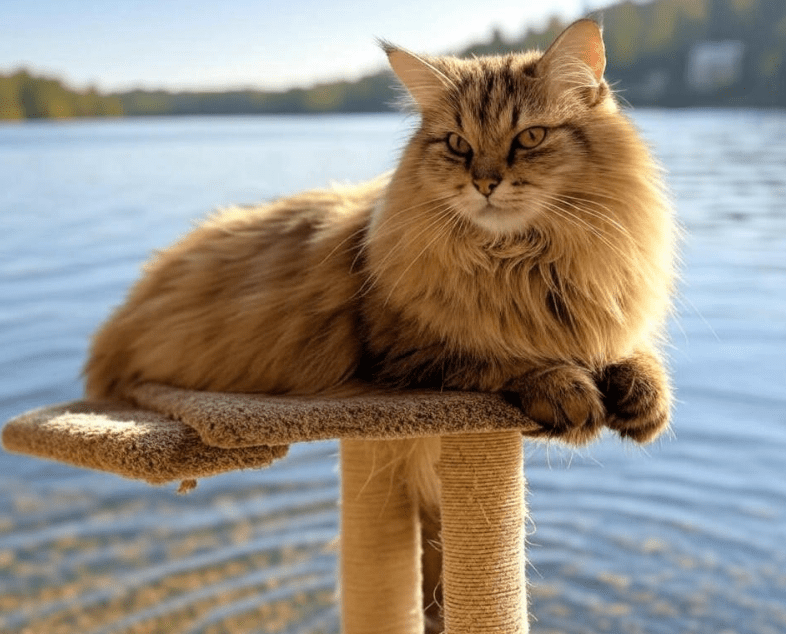
Step 1: Scent Introduction (Days 1–3)
Before visual contact, familiarize the cats with each other’s scent:
1.Swap bedding or toys between the Maine Coon and the new cat.
2.Rub a cloth on one cat’s cheeks and place it near the other’s space.
3.Feed them near the door separating their areas to associate the other’s scent with positive experiences.
Why It Works: Scent is a primary way cats communicate, and early exposure reduces fear during face-to-face meetings.
Step 2: Separate but Visible (Days 4–7)
Allow the cats to see each other without physical contact:
1.Use a pet gate or cracked door to create a barrier.
2.Place their food bowls on opposite sides of the barrier to encourage calm association.
3.Observe their body language: Hissing or puffing up is normal initially, but prolonged aggression may require slowing down.
Tip: Reward calm behavior with treats or praise to reinforce positive interactions.
Step 3: Controlled Meetings (Week 2)
Begin short, supervised face-to-face meetings:
1.Choose a neutral room and keep sessions brief (5–10 minutes).
2.Have a second person present to intervene if needed.
3.Use toys or treats to distract from tension and encourage play.
4.Gradually increase meeting duration if both cats remain relaxed.
Signs of Progress: Tail up, relaxed ears, or playful behavior indicate growing comfort.
Step 4: Shared Space (Week 3–4)
Allow the cats to share space under supervision:
1.Remove barriers but monitor closely for signs of aggression.
2.Provide multiple resources (litter boxes, beds, scratching posts) to prevent competition.
3.Watch for bullying, such as one cat blocking access to food or litter.
Note: Some cats may take longer to adjust. Be patient and revert to earlier steps if conflicts arise.
Step 5: Full Integration
Once the cats coexist peacefully for several days, allow unsupervised interaction:
1.Ensure safe spaces remain available for retreat.
2.Continue monitoring for subtle signs of stress, like hiding or reduced appetite.
3.Celebrate milestones, like shared grooming or play, as signs of a successful bond.
Step-by-Step Guide to Introduce a Maine Coon to a New Dog
Introducing a Maine Coon to a dog involves additional considerations due to differences in behavior and size. Follow these steps for a safe and effective introduction.
Step 1: Pre-Introduction Training (Before Arrival)
Prepare the dog for a cat-friendly environment:
1.Train basic commands like “sit,” “stay,” and “leave it” to control impulsive behavior.
2.Ensure the dog is comfortable with a leash or crate for controlled meetings.
3.If the dog has a high prey drive, consult a professional trainer before proceeding.
Step 2: Scent Introduction (Days 1–3)
Familiarize the Maine Coon and dog with each other’s scent:
1.Swap bedding or use a cloth to transfer scents between the animals.
2.Place the scented items near their respective safe spaces.
3.Reward calm behavior with treats to create positive associations.
Step 3: Controlled Visual Contact (Days 4–7)
Allow the Maine Coon and dog to see each other safely:
1.Keep the dog leashed or crated and the Maine Coon free to move.
2.Use a pet gate for added safety if the dog is excitable.
3.Feed them at a distance where both remain calm, gradually reducing the gap over days.
Tip: Watch the Maine Coon’s body language. A relaxed tail or slow blinking indicates comfort, while flattened ears or hissing suggests stress.
Step 4: Supervised Meetings (Week 2)
Begin short, leashed interactions in a neutral space:
1.Keep the dog on a leash to prevent chasing or lunging.
2.Allow the Maine Coon to approach or retreat as desired.
3.Use toys or treats to redirect the dog’s focus if they fixate on the cat.
4.Gradually increase meeting time as both animals relax.
Signs of Success: The dog ignores the cat or shows calm curiosity, and the Maine Coon moves freely without hiding.
Step 5: Gradual Freedom (Week 3–4)
Allow more freedom under close supervision:
1.Let the dog off-leash if they consistently remain calm around the Maine Coon.
2.Ensure the Maine Coon has high perches or escape routes to feel secure.
3.Monitor for chasing or rough play, intervening immediately if it occurs.
Step 6: Full Integration
Once the Maine Coon and dog coexist peacefully, allow unsupervised interactions:
1.Maintain separate feeding areas to prevent resource guarding.
2.Provide the Maine Coon with vertical spaces (e.g., cat trees) to escape if needed.
3.Continue reinforcing positive behavior with rewards.
Special Considerations for Maine Coons
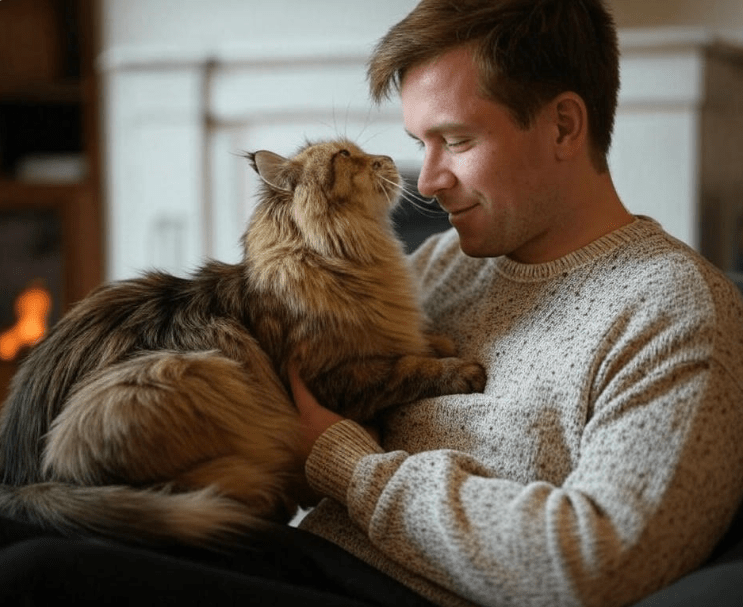
Maine Coons have unique traits that influence the introduction process:
Size Advantage: Their large size may make them less intimidated by dogs but could overwhelm smaller cats.
Playful Nature: Maine Coons often enjoy interactive play, which can be a bonding tool with dogs or cats.
Vocal Communication: Their chirps and trills may confuse dogs initially, so monitor reactions.
Grooming Needs: Ensure the Maine Coon’s long fur is maintained to avoid stress-related overgrooming during introductions.
Tips for a Successful Introduction
To maximize success when introducing a Maine Coon to a new cat or dog, keep these tips in mind:
Go Slow: Rushing the process can lead to setbacks. Let the animals set the pace.
Stay Calm: Your Maine Coon and the new pet will pick up on your emotions, so remain relaxed and confident.
Use Positive Reinforcement: Reward calm and friendly behavior with treats, praise, or playtime.
Monitor Body Language: Learn to read signs of stress (e.g., hissing, growling, or tucked tails) versus comfort (e.g., relaxed posture, play bows).
Be Consistent: Stick to a routine for feeding, play, and rest to reduce anxiety.
Provide Enrichment: Toys, scratching posts, and puzzle feeders keep both animals mentally stimulated, reducing tension.
Common Challenges and Solutions
Even with careful planning, challenges may arise. Here’s how to address them:
1. Aggression
Issue: Hissing, swatting, or growling between the Maine Coon and new pet.
Solution: Separate them and revert to scent or visual introduction. Consult a behaviorist if aggression persists.
2. Fear or Hiding
Issue: The Maine Coon or new pet hides or avoids interaction.
Solution: Ensure safe spaces are accessible and give them time to adjust. Use pheromone diffusers (e.g., Feliway) to reduce stress.
3. Resource Guarding
Issue: One pet becomes possessive over food, toys, or litter boxes.
Solution: Provide multiple resources in different locations and feed pets separately.
4. Chasing (Dog-Specific)
Issue: The dog chases the Maine Coon, causing stress.
Solution: Reinforce “leave it” training and keep the dog leashed until they remain calm around the cat.
When to Seek Professional Help
If introductions stall or conflicts escalate, consult a professional:
Veterinarian: To rule out health issues causing aggression or stress.
Certified Animal Behaviorist: For tailored strategies to manage complex dynamics.
Trainer: For dogs needing additional obedience training.
Long-Term Harmony in a Multi-Pet Household
Once your Maine Coon and the new cat or dog are comfortable, focus on maintaining harmony:
Routine: Consistent feeding, play, and rest schedules reduce competition.
Attention: Spend one-on-one time with each pet to prevent jealousy.
Health Monitoring: Regular vet checkups ensure both animals stay healthy, reducing stress-related conflicts.
Enrichment: Provide ample toys, perches, and activities to keep both pets engaged.
Conclusion
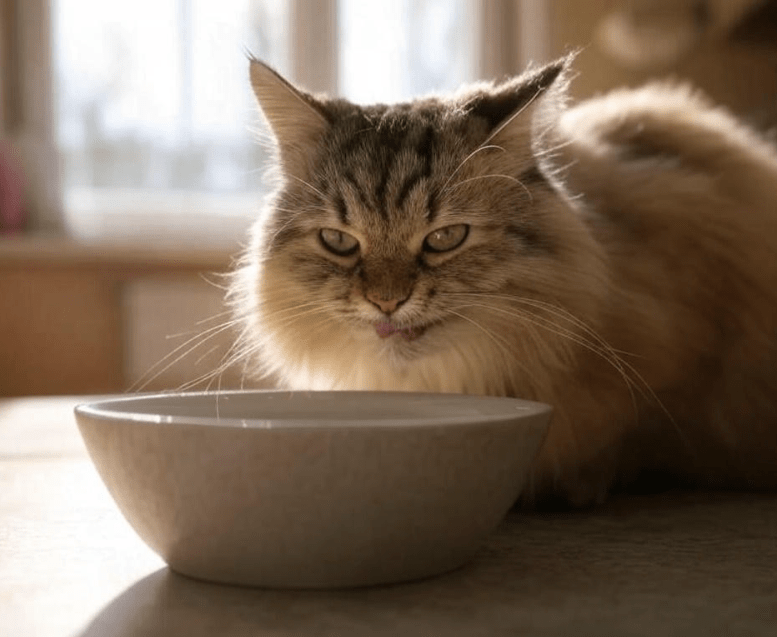
Introducing a Maine Coon to a new cat or dog is a rewarding journey that requires patience, preparation, and a thoughtful approach. By following the step-by-step process outlined in this guide—starting with scent exchange, progressing to controlled meetings, and ensuring long-term harmony—you can create a peaceful multi-pet household. Maine Coons, with their friendly and adaptable nature, often form strong bonds with other animals when introductions are handled correctly. This comprehensive resource equips you with the knowledge and tools to make the process as smooth as possible, ensuring your Maine Coon and their new companion thrive together.
For personalized guidance, consult your veterinarian or a pet behaviorist to address your unique situation. With time and care, your Maine Coon and their new friend can share a home filled with mutual respect and affection.

